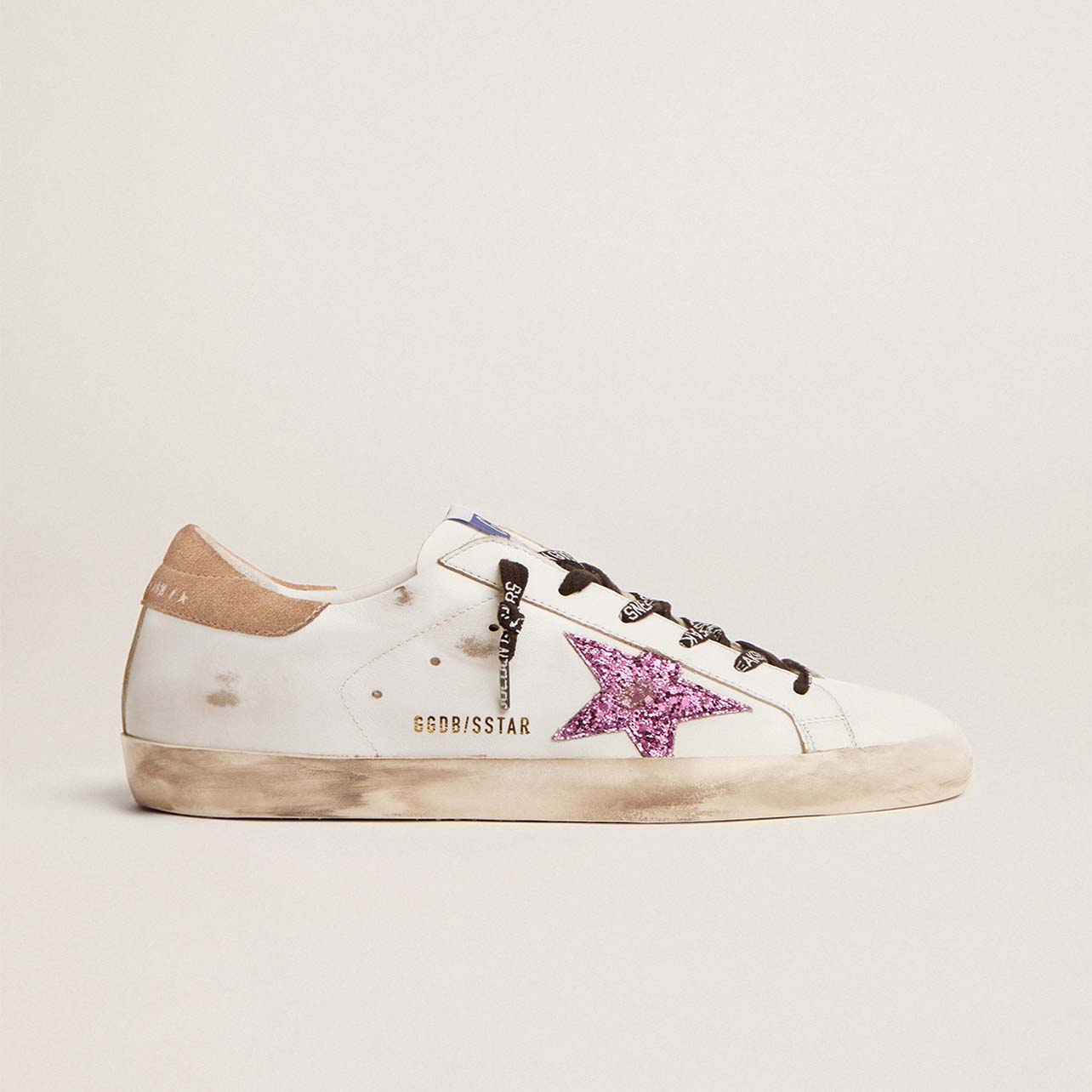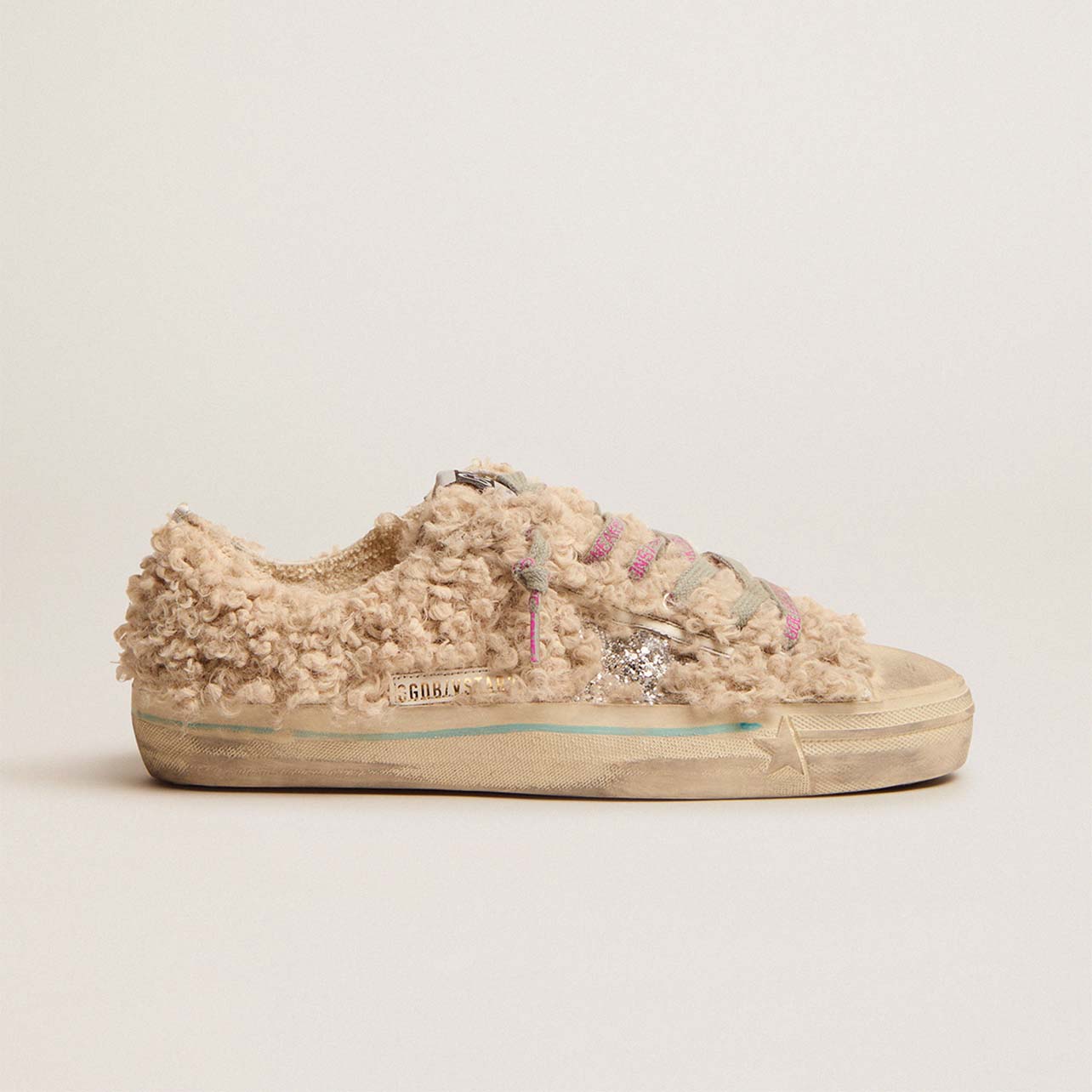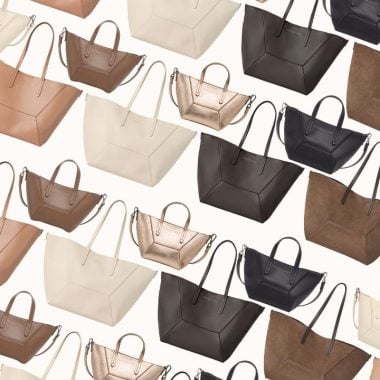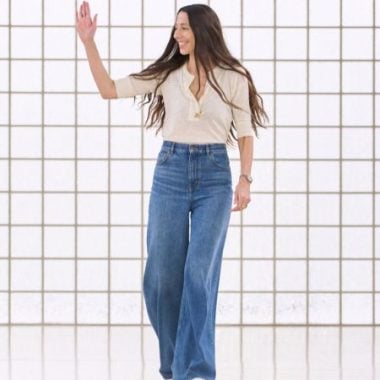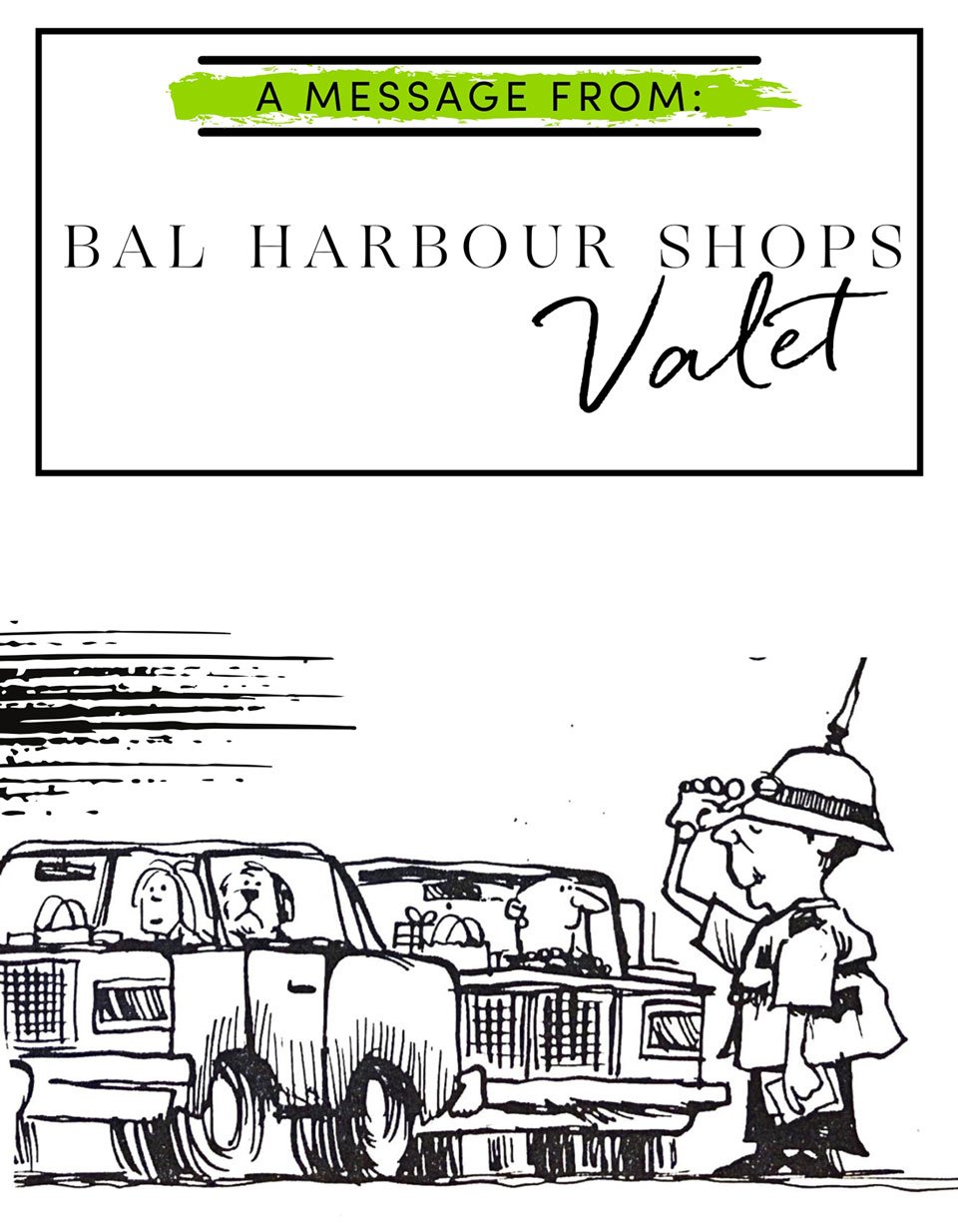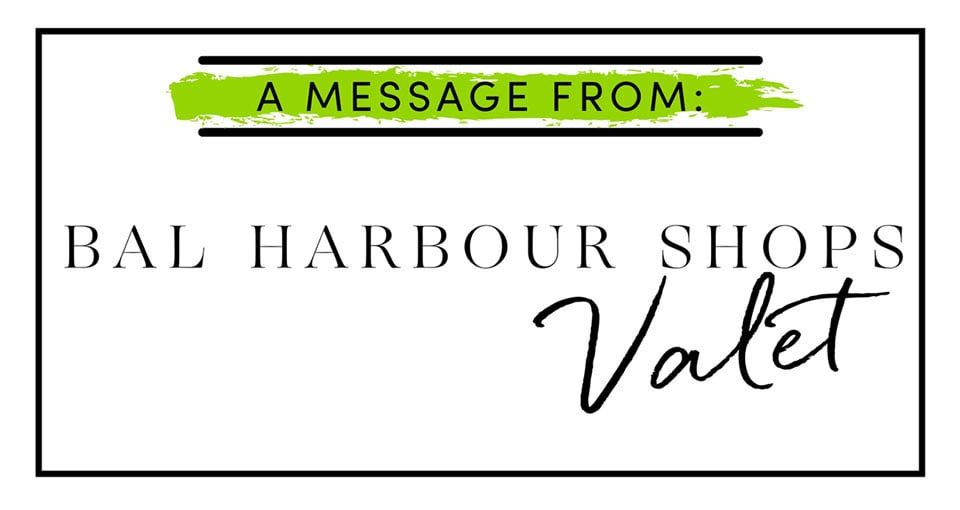By Nick Remsen
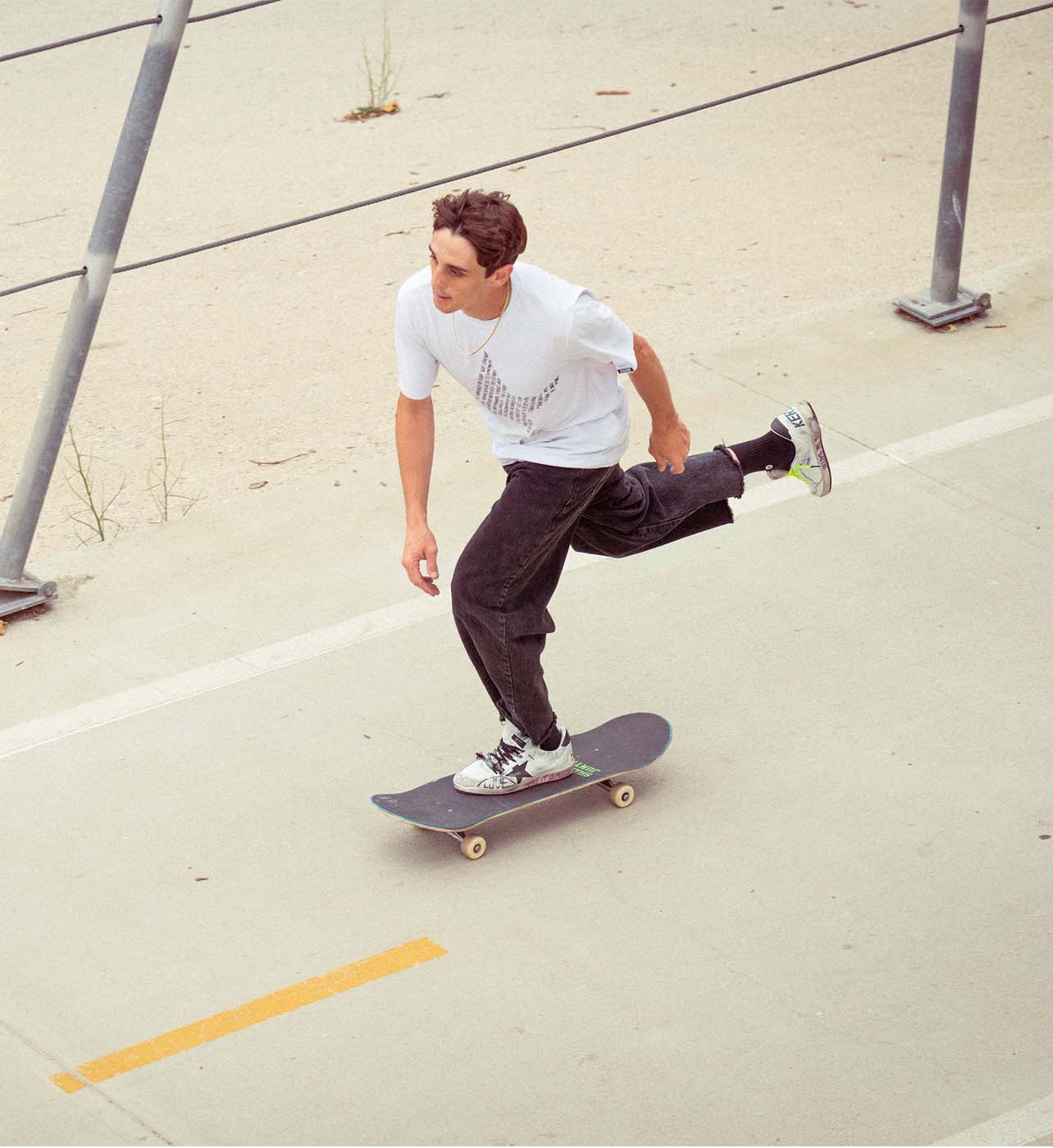
Skateboarder Cory Juneau wearing looks from his collaboration with Golden Goose.
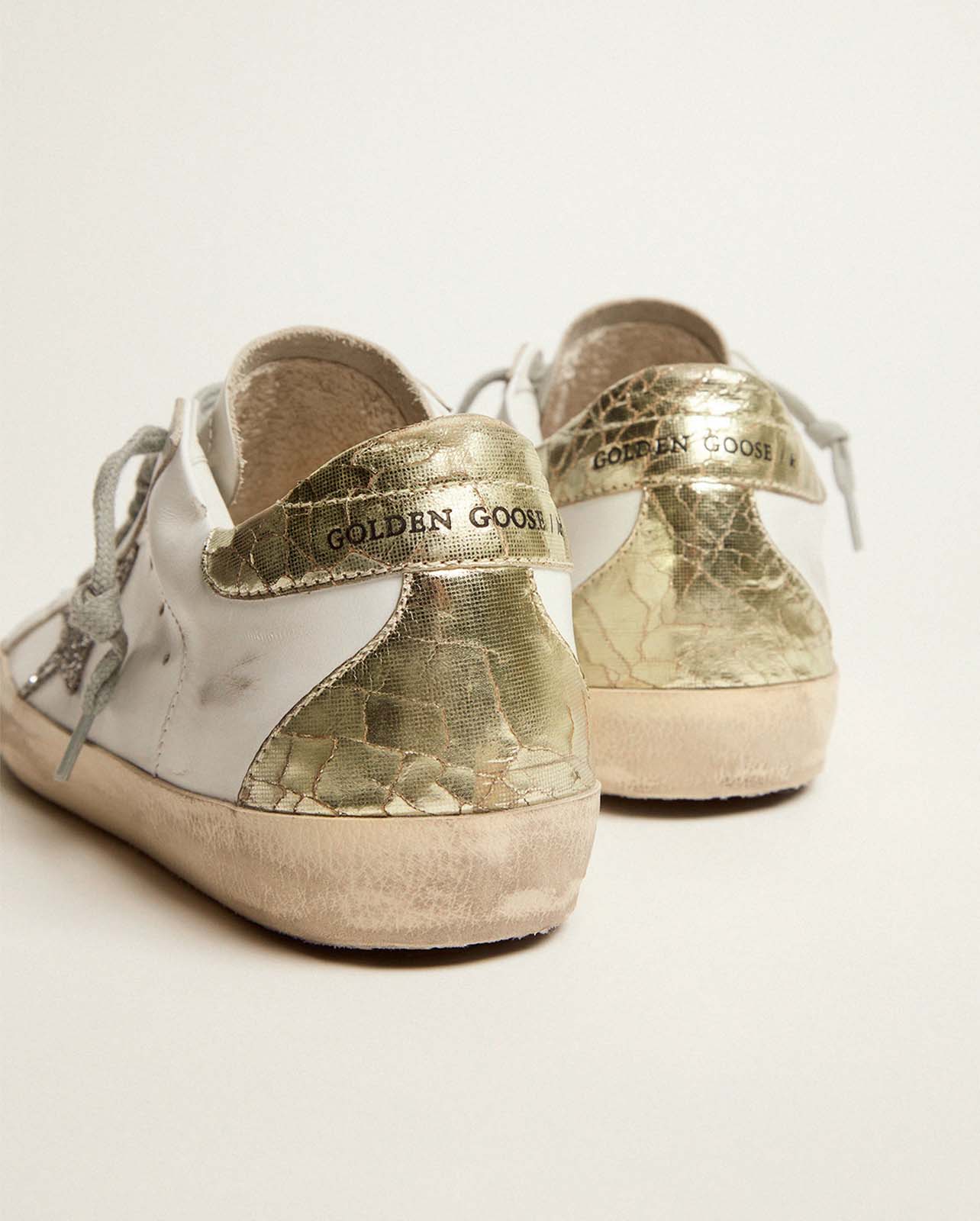
Golden Goose made distressed sneakers a status symbol.
Next time you’re at the airport, take a look at peoples’ feet. Within a few minutes, if not seconds, you’re more than likely to spot at least one traveler wearing a pair of Golden Goose sneakers. It’s a test I run every time I fly, which is about six times a month, and I haven’t ever gone through MIA or JFK or LAX without seeing the kicks. Not once.
Golden Goose’s relative ubiquity is remarkable; each and every pair the label produces—recognizably decorated with outsized star cutouts, purposeful dirt scrapes and eccentric color combos—is made by hand in Northern Italy, ensuring that no two pairs are identical. That said, for as artisanal a product as they deliver, the company is massively scaled. Golden Goose sells its goods at more than 120 company-operated stores worldwide (Bal Harbour very much included), as well as various high-end retailers.
This year marks Golden Goose’s 20th anniversary in business; the label’s freshman collection debuted for Spring 2001, after its founding by the Venetian designers Francesca Rinaldo and Alessandro Gallo. Throughout the year, the brand has activated a number of celebratory events, including a collaborative sneaker with the American skateboarder Cory Juneau (who won the bronze medal at the Tokyo Olympics this summer) and a traveling installation of a “Golden Bench” upon which messages of “love” could be written.
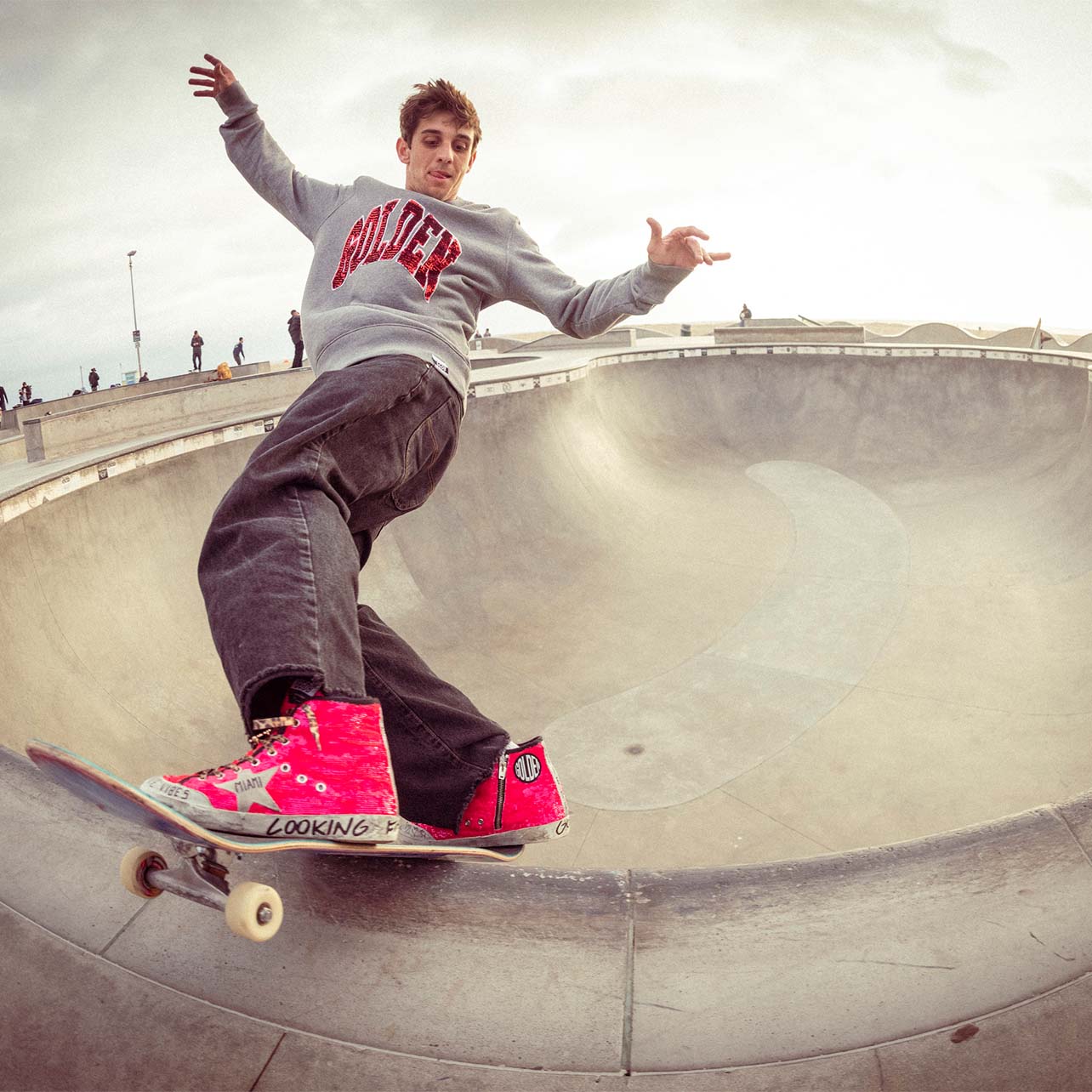
Skateboarder Cory Juneau was tapped to collaborate on a new sneaker as part of Golden Goose’s 20th anniversary celebration.
Yet for all of the line’s popularity and, at this point, longevity, Golden Goose remains somewhat of an enigma; just how did pre- distressed “dirty” sneakers, which are sold in the $500 range and up, become so hotly in demand?
Silvio Campara, Golden Goose’s CEO since 2018, says: “Really, it’s because we’ve always been consistent. I think this is the simple, super secret of Golden Goose’s success in America and beyond. We never dilute, and we never discount. We believe in sustaining the dream.” A collective design group comes up with the sneakers’ seasonal aesthetics, but they move at a measured pace; new shapes are not always introduced, nor are markedly different material constructs. Then, artisans craft each pair by hand, lending the shoes a built-in, familiar appeal even before the adornments and the abrasions are applied.
Of their eclectic polychrome approach and textural juxtapositions, Campara says the brand’s original vision was that inspiration could be drawn from Venice, Italy to Venice, California, and all that rests in between.
“Every single thing, every single idea,” he notes. “A beautiful fruit, someone skating on the street, a bookstore. This is where Golden Goose comes from. And, I have to say, at 20 years in, we don’t see ourselves as reaching an arrival point. Rather, it’s just the beginning.”

